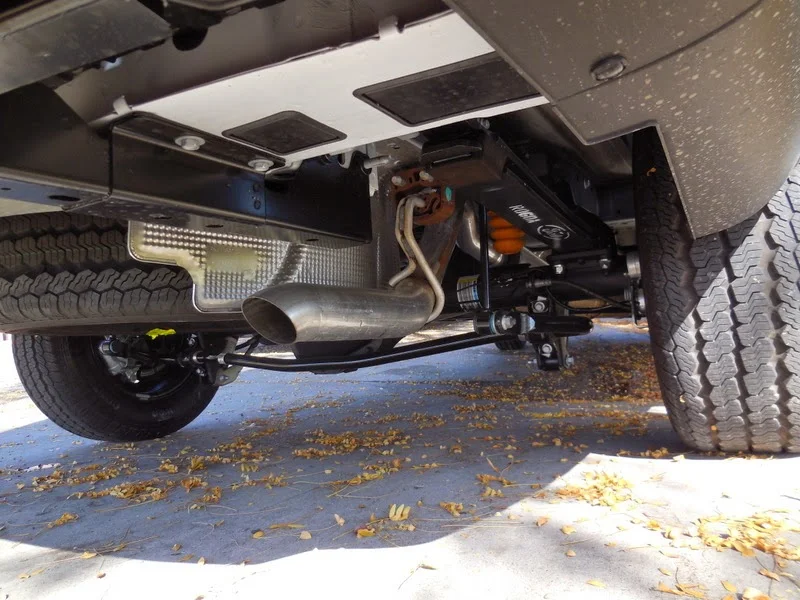In August 2014 Ford started manufacturing the full-sized Transit van -- not to be confused with the teeny Transit Connect. The full-size Transit is the replacement for the venerable full-sized Econoline E-series vans, which is what I have been driving for the last 239,000 miles.
So why haven't I been able to find one on a dealer's lot? Somebody suggested it was because the dealers don't really know what the market wants, and they don't want to guess wrong. The new 2015 Transit has a lot of choices: three roof heights, two wheel bases, cargo versus passenger, and three engines to choose from.
At long last I got lucky and saw one at a truck stop:
Unfortunately it was a long-wheelbase passenger van, rather than the short wheel-base, low roof, windowless cargo van that I want. Still, it made a positive impression. Remember that this is a uni-body -- stamped and spot-welded sheet metal -- rather than a box on two frame rails, like a truck.
I didn't have a tape measure handy but there was a Ford Econoline van right next to it, for comparison. The new Transit was a couple inches lower in overall height, an inch or two narrower (hooray!), and closer to the ground (boo!).
The ground clearance was better than I thought:
I've often wondered how they measure the "ground clearance" of a vehicle: to the lowest point? To the lowest vulnerable point? And how vulnerable?
From the back we can see the lowest points, I think:
The lowest spot might be the welded bracket that grabs the lower end of the rear shock absorber. It also sticks out low on most vehicles, including pickup trucks.
Unlike the Econoline, the new Transit has a (horizontal) rear stabilizer bar, similar to the one in front. But this stabilizer bar is slightly higher than the bottom of the differential housing, as well as slightly aft of the differential. So although the stabilizer bar looks somewhat vulnerable, it might be protected by the differential housing.
The weakest spot in the Transit van are the small tires. There is no bigger handicap than small tires! They aren't even LT series. They are about 3 inches smaller in diameter than the ones on the Econoline van right next to this Transit van.
But the wheel-wells are pretty roomy. If you could fit bigger tires on the Transit, it might be a viable option as a boondocking machine. But it is still over-priced, and fuel economy is poorer than a pickup with the same engine.
So why haven't I been able to find one on a dealer's lot? Somebody suggested it was because the dealers don't really know what the market wants, and they don't want to guess wrong. The new 2015 Transit has a lot of choices: three roof heights, two wheel bases, cargo versus passenger, and three engines to choose from.
At long last I got lucky and saw one at a truck stop:
Unfortunately it was a long-wheelbase passenger van, rather than the short wheel-base, low roof, windowless cargo van that I want. Still, it made a positive impression. Remember that this is a uni-body -- stamped and spot-welded sheet metal -- rather than a box on two frame rails, like a truck.
I didn't have a tape measure handy but there was a Ford Econoline van right next to it, for comparison. The new Transit was a couple inches lower in overall height, an inch or two narrower (hooray!), and closer to the ground (boo!).
The ground clearance was better than I thought:
 |
| Looking from the bow, towards the stern. Pretty clean underneath. |
From the back we can see the lowest points, I think:
 |
| From the stern, looking towards the bow. |
The lowest spot might be the welded bracket that grabs the lower end of the rear shock absorber. It also sticks out low on most vehicles, including pickup trucks.
Unlike the Econoline, the new Transit has a (horizontal) rear stabilizer bar, similar to the one in front. But this stabilizer bar is slightly higher than the bottom of the differential housing, as well as slightly aft of the differential. So although the stabilizer bar looks somewhat vulnerable, it might be protected by the differential housing.
The weakest spot in the Transit van are the small tires. There is no bigger handicap than small tires! They aren't even LT series. They are about 3 inches smaller in diameter than the ones on the Econoline van right next to this Transit van.
But the wheel-wells are pretty roomy. If you could fit bigger tires on the Transit, it might be a viable option as a boondocking machine. But it is still over-priced, and fuel economy is poorer than a pickup with the same engine.

Comments
http://blog.caranddriver.com/ram-to-launch-new-fiat-ducato-based-promaster-full-size-van-in-late-2013-2012-l-a-auto-show/
But maybe I have judged too quickly.
A mechanic once told me that I was lucky I had the 1995 Econoline; it predated the Triton engine by a couple years. He didn't think the Triton held up well.
About the older, low mileage vehicles. I agree they are probably a bargain WHEN you can find one. But that won't be easy.
Now that I've downsized to two bicycles, and only one gets used per season, I really don't need something as large and cumbersome as a full-sized van. Right now I am leaning towards a farmer/rancher trim level F-150 pickup, rear wheel drive, regular cab, and a homemade cap/shell. Does that sound about right for pulling a 3000 pound trailer?